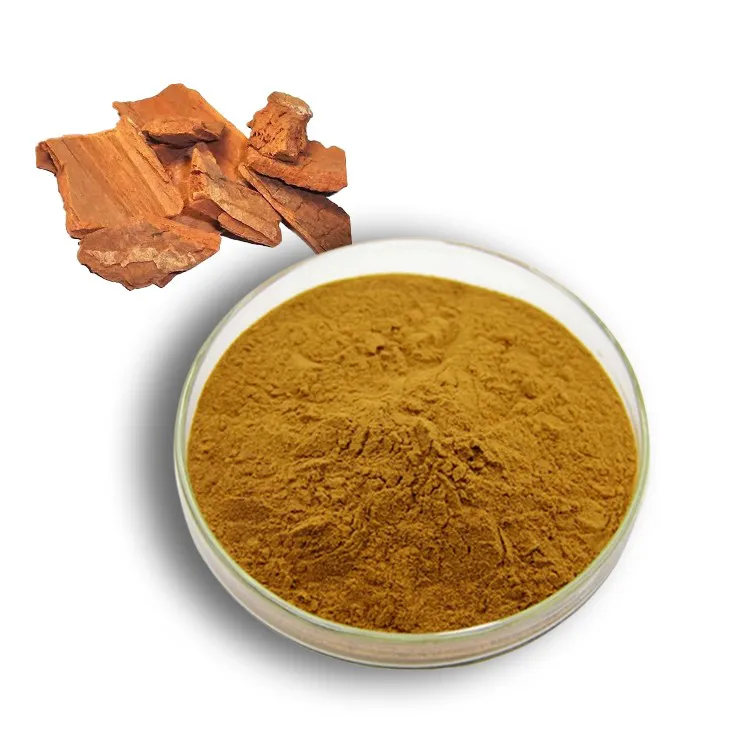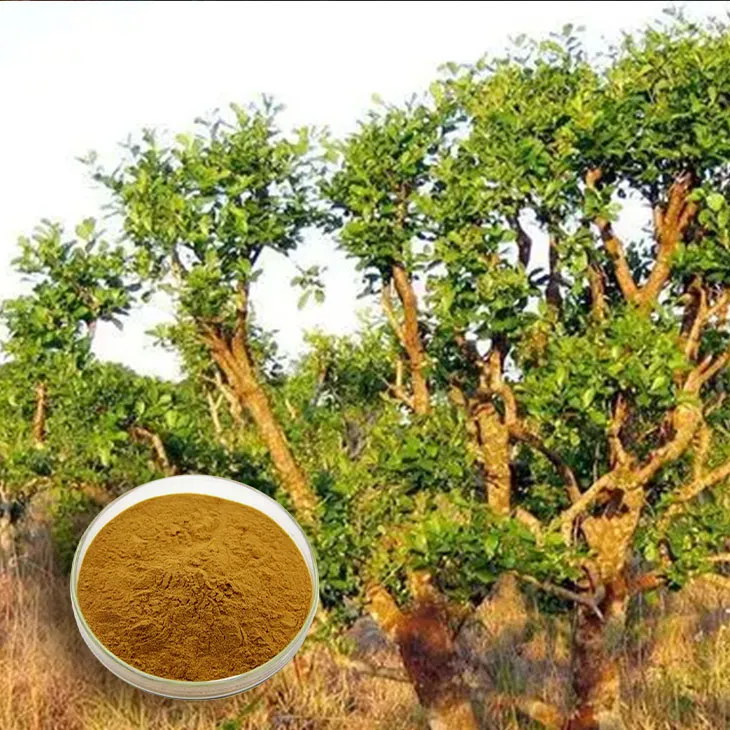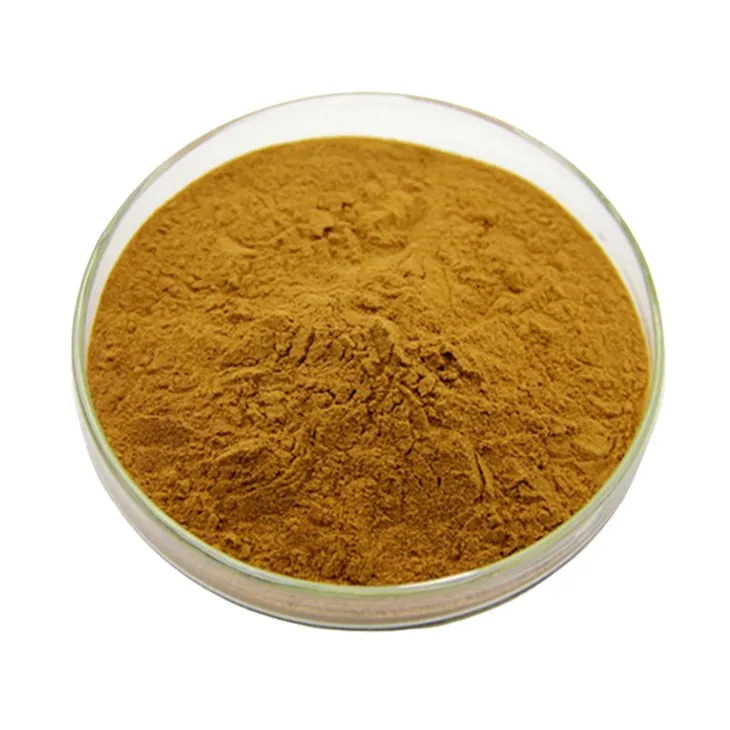- 0086-571-85302990
- sales@greenskybio.com
Synergy and Caution: Interactions of Yohimbine Bark Extract with Other Substances
2024-07-04

1. Introduction
Yohimbine Bark Extract has been a subject of much interest in the fields of health, fitness, and alternative medicine. Derived from the bark of the Pausinystalia yohimbe tree, it contains the alkaloid yohimbine, which has various physiological effects. Understanding how this extract interacts with other substances is crucial for both maximizing its potential benefits and avoiding potential risks. This article aims to provide a comprehensive overview of these interactions, exploring both the synergetic possibilities and the necessary cautions.

2. Yohimbine Bark Extract: A Brief Overview
Yohimbine is an indole alkaloid. It has been traditionally used for a variety of purposes, including as an aphrodisiac and for treating certain sexual dysfunctions. In modern times, it has also gained popularity in the fitness community for its potential to aid in fat loss and enhance athletic performance.
The bark extract contains other components along with yohimbine, which may also contribute to its overall effects. However, the main focus in terms of interactions is often on the yohimbine alkaloid itself.

3. Synergistic Interactions
3.1. Caffeine
One of the most studied synergistic interactions is that between Yohimbine Bark Extract and caffeine. Both substances have the potential to increase energy expenditure and enhance focus.
Caffeine works mainly by blocking adenosine receptors, which leads to increased neural activity and a release of fatty acids from adipose tissue. Yohimbine, on the other hand, acts as an alpha - 2 adrenergic receptor antagonist. This means it can enhance the release of norepinephrine, a neurotransmitter involved in the fight - or - flight response and also in fat metabolism.
When combined, they may have a potentiating effect on fat burning. For example, a study showed that individuals who took a combination of yohimbine and caffeine had a greater increase in lipolysis (the breakdown of fats) compared to those who took either substance alone. This combination may also lead to improved physical performance, as increased energy availability from fat breakdown can be utilized during exercise.
3.2. Green Tea Extract
Green Tea Extract, which contains catechins such as epigallocatechin - 3 - gallate (EGCG), has been shown to have potential health benefits, including antioxidant and anti - inflammatory properties. When combined with yohimbine bark extract, there may be synergistic effects on metabolism.
EGCG has been shown to enhance thermogenesis, which is the production of heat in the body, often associated with increased calorie burning. Yohimbine's ability to increase norepinephrine release can further enhance this thermogenic effect. In addition, both substances may have positive effects on blood lipid profiles, and when combined, they may potentially have a more significant impact on overall cardiovascular health.
3.3. L - Tyrosine
L - Tyrosine is an amino acid that is a precursor to neurotransmitters such as dopamine, norepinephrine, and epinephrine. When combined with yohimbine bark extract, it may enhance the effects of yohimbine on the release of norepinephrine.
Yohimbine increases the availability of norepinephrine by blocking its re - uptake. L - Tyrosine, on the other hand, provides the building blocks for the synthesis of norepinephrine. Thus, in situations where the body may be depleted of tyrosine or in individuals with high stress levels (which can deplete neurotransmitter stores), this combination may be particularly beneficial in maintaining optimal neural and metabolic function.

4. Cautions: Negative Interactions
4.1. Medications for High Blood Pressure
Yohimbine can increase blood pressure by increasing the release of norepinephrine. This poses a significant risk when combined with medications used to treat high blood pressure.
Medications such as beta - blockers and some calcium channel blockers work to lower blood pressure. Combining these with yohimbine bark extract can counteract the effects of the medications and lead to dangerous spikes in blood pressure. For example, a patient on beta - blocker therapy who takes yohimbine may experience a sudden increase in systolic and diastolic blood pressure, which can put additional strain on the heart and blood vessels.
4.2. Antidepressants
There are potential interactions between yohimbine bark extract and antidepressants. Many antidepressants, such as selective serotonin re - uptake inhibitors (SSRIs) and monoamine oxidase inhibitors (MAOIs), affect the levels of neurotransmitters in the brain.
Yohimbine's action on norepinephrine release can disrupt the carefully balanced neurotransmitter levels maintained by these antidepressants. This can lead to an increased risk of side effects, including serotonin syndrome (in the case of SSRIs) or hypertensive crises (in the case of MAOIs). Serotonin syndrome can cause symptoms such as agitation, confusion, rapid heart rate, and high body temperature, while hypertensive crises can lead to extremely high blood pressure and potential organ damage.
4.3. Diabetes Medications
Yohimbine's effect on the sympathetic nervous system can also impact blood sugar levels. When combined with diabetes medications, such as insulin or oral hypoglycemic agents, it can lead to unpredictable changes in blood glucose.
For example, yohimbine may increase the release of glucose from the liver, which can counteract the blood - sugar - lowering effects of diabetes medications. This can be particularly dangerous for diabetic patients, as it can lead to hyperglycemia (high blood sugar), which can have short - and long - term negative impacts on health, including damage to the eyes, kidneys, and nerves.

5. Dietary Considerations
In addition to medications, there are also dietary factors to consider when using yohimbine bark extract. High - fat meals can affect the absorption and metabolism of yohimbine.
Fatty foods can slow down the absorption of yohimbine, potentially reducing its effectiveness. It is generally recommended to take yohimbine on an empty stomach or at least a few hours after a meal to ensure optimal absorption. Additionally, excessive alcohol consumption can also interact with yohimbine. Alcohol can impair liver function, which is involved in the metabolism of yohimbine. This can lead to increased levels of yohimbine in the body, potentially increasing the risk of side effects.
6. Conclusion
Yohimbine bark extract has the potential for synergistic interactions with certain substances, such as caffeine, Green Tea Extract, and L - Tyrosine, which can offer benefits in terms of fat loss, performance enhancement, and overall health improvement. However, it is of utmost importance to be cautious when using it in combination with other substances, especially medications for high blood pressure, antidepressants, and diabetes medications.
Dietary factors also play a role in its effectiveness and safety. Further research is needed to fully understand all the possible interactions of yohimbine bark extract, but in the meantime, anyone considering using this extract should consult a healthcare professional, especially if they are taking other medications or have underlying health conditions.
FAQ:
What are the potential synergistic substances with yohimbine bark extract?
Some substances may have a synergistic effect with yohimbine bark extract. For example, certain stimulants might enhance its impact on energy levels or metabolic functions. However, specific combinations need to be studied further. Also, in some cases, substances like caffeine could potentially work together with yohimbine bark extract to increase alertness and fat - burning processes, but this should be done under proper medical supervision.
What risks can yohimbine bark extract pose when interacting with other substances?
When yohimbine bark extract interacts with other substances, there can be several risks. It may cause adverse effects on the cardiovascular system, especially when combined with other stimulants. For instance, if combined with drugs that increase blood pressure, it could lead to a dangerous spike in blood pressure. Additionally, interactions with medications that affect the nervous system might result in over - stimulation or unwanted side effects such as tremors, anxiety, or insomnia.
Can yohimbine bark extract interact with medications?
Yes, yohimbine bark extract can interact with medications. It can interfere with drugs that regulate blood pressure, as mentioned before. It may also interact with antidepressant medications. Some antidepressants work by affecting neurotransmitter levels in the brain, and yohimbine bark extract can potentially disrupt this balance when combined, leading to increased side effects or reduced effectiveness of the medications.
How should one ensure safe use of yohimbine bark extract in combination with other substances?
To ensure safe use of yohimbine bark extract in combination with other substances, it is crucial to consult a healthcare professional. They can assess your medical history, current medications, and overall health status. Additionally, always start with the lowest recommended dose when using a combination and closely monitor for any adverse effects. It is also important to research and only use products from reliable sources.
Are there any natural substances that should be avoided when taking yohimbine bark extract?
There are some natural substances that should be used with caution when taking yohimbine bark extract. For example, other herbal stimulants like ephedra (although its use is restricted in many places due to safety concerns) may interact unfavorably. Also, certain adaptogenic herbs, if combined without proper knowledge, could potentially lead to unexpected interactions and side effects. It is best to consult an expert in herbal medicine or a healthcare provider.
Related literature
- Interactions of Herbal Supplements with Pharmaceuticals"
- "Yohimbine: Pharmacology, Toxicology and Therapeutic Applications"
- "The Impact of Botanical Extracts on Drug Metabolism and Interactions"
- ▶ Hesperidin
- ▶ citrus bioflavonoids
- ▶ plant extract
- ▶ lycopene
- ▶ Diosmin
- ▶ Grape seed extract
- ▶ Sea buckthorn Juice Powder
- ▶ Beetroot powder
- ▶ Hops Extract
- ▶ Artichoke Extract
- ▶ Reishi mushroom extract
- ▶ Astaxanthin
- ▶ Green Tea Extract
- ▶ Curcumin Extract
- ▶ Horse Chestnut Extract
- ▶ Other Problems
- ▶ Boswellia Serrata Extract
- ▶ Resveratrol Extract
- ▶ Marigold Extract
- ▶ Grape Leaf Extract
- ▶ blog3
- ▶ Aminolevulinic acid
- ▶ Cranberry Extract
- ▶ Red Yeast Rice
- ▶ Red Wine Extract
-
Oat Straw Extract Powder
2024-07-04
-
Berberis aristata Extract
2024-07-04
-
Buckthorn bark extract
2024-07-04
-
Curcuma Longa Extract/Turmeric extract
2024-07-04
-
Citrus Aurantium Extract
2024-07-04
-
Hops Extract
2024-07-04
-
Red Vine Extract
2024-07-04
-
Saffron Extract Powder
2024-07-04
-
Lemon Juice Powder
2024-07-04
-
Artichoke Extract
2024-07-04





















